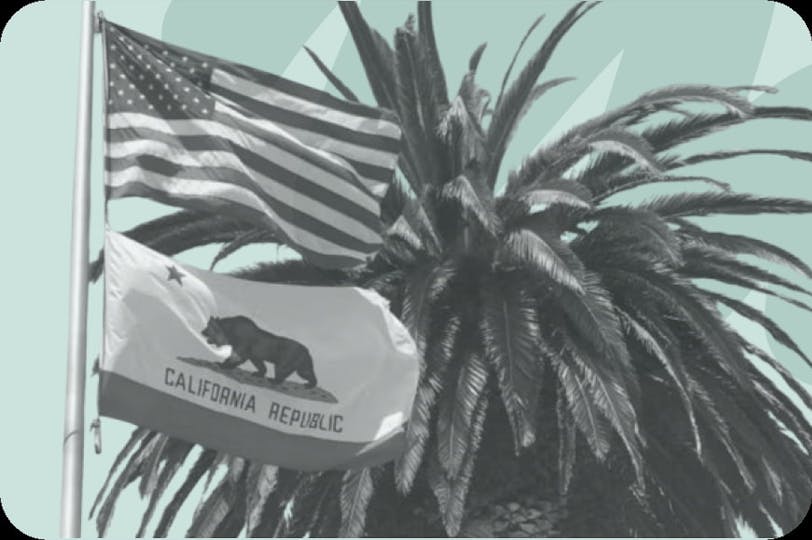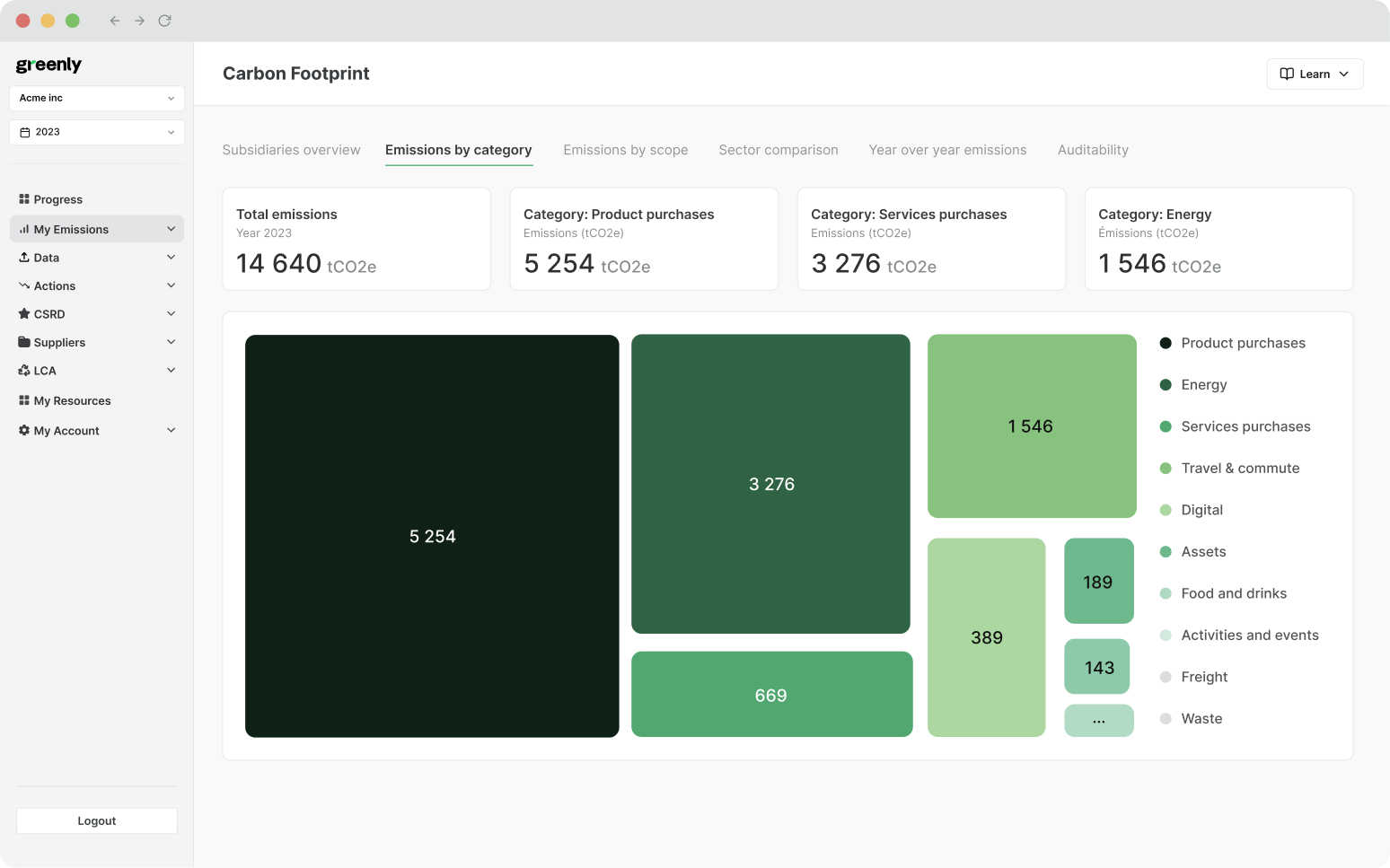
California Climate Accountability Package: SB253, SB261, & SB252
What is the California Climate Accountability Package, and how do SB 253 and SB 261 (SB 219), and SB 252 help the state work towards their environmental goals?
ESG / CSR
Industries



CDP, formerly known as the Carbon Disclosure Project, is the world’s most widely used database of organizational environmental impact information such as global greenhouse gas emissions.
The organization is a non-profit global disclosure system operating in roughly 90 countries. Organizations use the CDP’s annual questionnaire for disclosing environmental data regarding their greenhouse gas emissions, create a low carbon economy, how they evaluate climate change risks, protect natural resources, forest impact, water resource use, and overall corporate awareness.
The aim of the Carbon Disclosure Project is to improve environmental impact data transparency and support sustainable business by helping companies measure, track, and reduce damage to the environment.
Therefore, the Carbon Disclosure Project can help the world to protect natural resources and prevent dangerous climate change by reducing carbon emissions in cities, states, and regions around the world.
Learn how CDP works to help companies with carbon disclosure to improve their investor and stakeholder relations while supporting a resilient future for the planet.
CDP, formerly known as the Carbon Disclosure Project, is a global non-profit managing a system for environmental reporting by corporations, municipalities, and the world's largest companies and organizations around the world.
Thousands of entities participate in the project by supplying self reported data and various environmental information through the CDP portal to respond to its annual questionnaires. CDP questions are designed to compile data on organizational climate change risks and opportunities, carbon emissions, energy efficiency, water use, and deforestation.
CDP was founded in 2000. Since then, it has become one the largest sources for global environmental performance data. CDP compiles this data so investors and other stakeholders can easily access this climate information by request.
CDP also scores companies based on their responses to its annual questionnaire. The aim of identifying leaders across different sectors is to incentivize environmental performance improvements. It helps companies promote environmental action, accountability, and transparency in support of a sustainable economy.
CDP is governed as an international non-profit organization consisting of: CDP Worldwide Group, CDP North America, Inc., and CDP Europe AISBL. CDP’s efforts are funded through international governments’ support and philanthropic grants.
The overview cards below will reveal CDP at a glance:
CDP has offices in 50 countries.
CDP receives annual disclosures from signatories in 90 countries.
Over 23,000 companies disclose their environmental impacts.
Over 1,100 governments and cities disclose and report to CDP.
Investors with assets of over $130tn in value report to CDP.
Purchasers buying $6.4 trillion USD in goods and services requested supplier CDP disclosures.
Nearly a fifth of global emissions and environmental data are reported from cities, states, and regions.
CDP’s platform helps prevent dangerous climate change through transparency and accountability.
CDP’s tools help organizations benchmark and improve environmental performance year over year.

CDP promotes economic prosperity in a way that protects the planet and its people. It engages investors, companies, cities, and governments to measure their environmental impact, increase corporate awareness, and make it a business norm to prevent dangerous climate change.
Using the data gathered through measurement, these entities have guidance on reducing their environmental footprint.
The core values that CDP operates on include transparency, accountability, gaining knowledge, making improvements, and shared accomplishment. Ultimately, the CDP can help companies to better understand their financial risks associated with climate change (such as via their climate related financial disclosures) in addition to their general environmental risks and how to improve upon environmental leadership.
The interactive flip cards below (move cursor over card to flip) will reveal more about some of these core values of the CDP:
The reason CDP has created its environmental disclosure system is to address global risks such as climate change, biodiversity loss, and water scarcity.
Through a data-driven problem-solving approach, CDP encourages key economic stakeholders to gain awareness of their contribution to key issues, so they can effectively prevent environmental damage.
The CDP works by having companies and other entities either supply their information to the platform by request from an authority, or as a self-selected company on their own behalf.
The following types of requesting authorities may ask for companies to report: investor signatories, supply chain members, members of the Net Zero Asset Managers Initiative, bank members, and members of the RE100 initiative.
The drop down sections below will reveal why the CDP asks for each of these pieces of information:
CDP’s annual questionnaire opens for responses in April each year. Signatories have until July to submit their responses to three key criteria: climate change, forest protection, and water use.
CDP’s questionnaire is scored by CDP-accredited partners who follow established data quality checks and quality assurance procedures to ensure fairness.
The methodology offers a higher score to companies that achieve low-impact operations, ongoing improvement, and transparent disclosure, though its exact methodology changes each year.
Key deadlines for the CDP in 2025 are as follows:
CDP scores are determined on a scale of A to F for companies. The highest achieving companies are recognized on CDP’s prestigious A-List, published each year in December.
Companies can review the exact scoring methodology on the CDP website in these core criteria, which is updated each year to follow the latest international updates on environmental impact.
The CDP requires information regarding various business operations to be disclosed. Companies self-report data using the CDP questionnaire, responding to questions that address issues material to their business activities.
The climate change questionnaire requests measurement on GHG emissions, energy use, and internal carbon pricing (if any is available) – all of which pertain to climate related risks.
The climate change questionnaire also aligns with another investor-focused environmental reporting initiative, the Task Force on Climate-related Financial Disclosures (TCFD).
This part of the questionnaire focuses on forward-looking projections for financial impacts from climate risks to business assets and operations.
The battle cards below will depict what signatories will have to report in the water, forests, and climate change questionnaires:
In each section of the questionnaire, certain sectors have additional questions due to their stronger impacts:

CDP funds its operations in part from fees collected for disclosures to its key initiatives and to report for investor requests. Certain companies reporting for recognition through the following initiatives are required to pay an annual fee:
The fees vary by the following regions: UK, Western European countries, Japanese companies, Brazilian companies, Latin America (excluding Brazil), Indian companies, All other companies.
The fees also vary by the following fee classifications:
Companies will not be subject to fees under certain circumstances.
All required fees will appear in the CDP dashboard prior to disclosure. Find the exact fee amounts for different contribution types on CDP’s Admin FAQ page.
| Country/Region | Subsidized Contribution | Standard Contribution | Enhanced Contribution | Fee Exemptions |
|---|---|---|---|---|
| 🇺🇸 United States | Reduced fee for small- to medium-sized businesses | Full access to platform and benefits | Additional data insights and CDP aligned badges | Exempt if reporting for the first time in three years or non-investor requests |
| 🇬🇧 United Kingdom | Reduced fee for small- to medium-sized businesses | Full access to platform and benefits | Additional data insights and CDP aligned badges | Exempt if reporting for the first time in three years or non-investor requests |
| 🇪🇺 Western Europe | Reduced fee for small- to medium-sized businesses | Full access to platform and benefits | Additional data insights and CDP aligned badges | Exempt if reporting for the first time in three years or non-investor requests |
| 🇯🇵 Japan | Reduced fee for small- to medium-sized businesses | Full access to platform and benefits | Additional data insights and CDP aligned badges | Exempt if reporting for the first time in three years or non-investor requests |
| 🇰🇷 South Korea | Reduced fee for small- to medium-sized businesses | Full access to platform and benefits | Additional data insights and CDP aligned badges | Exempt if reporting for the first time in three years or non-investor requests |
| 🇧🇷 Brazil | Reduced fee for small- to medium-sized businesses | Full access to platform and benefits | Additional data insights and CDP aligned badges | Exempt if reporting for the first time in three years or non-investor requests |
| 🌎 Latin America (excluding Brazil) | Reduced fee for small- to medium-sized businesses | Full access to platform and benefits | Additional data insights and CDP aligned badges | Exempt if reporting for the first time in three years or non-investor requests |
| 🇮🇳 India | Reduced fee for small- to medium-sized businesses | Full access to platform and benefits | Additional data insights and CDP aligned badges | Exempt if reporting for the first time in three years or non-investor requests |
| 🌐 All other companies | Reduced fee for small- to medium-sized businesses | Full access to platform and benefits | Additional data insights and CDP aligned badges | Exempt if reporting for the first time in three years or non-investor requests |

CDP encourages companies to self-report their environmental impact data via its different questionnaires. This type of disclosure is what CDP refers to as a self-selected company (SSC).
SSCs are subject to an administrative fee, which varies by fee type and region. Like a company reporting by request, an SSC agrees to make its questionnaire responses available to investors who participate in CDP and receive a score. The same scoring methodology and rules for other companies applies to SSCs.
Apart from investors, self-selected company responses are only visible to supply chain members, banks, and other stakeholders if the SSC submits a public response. These companies can proceed by contacting CDP’s Help Center.
Your company should report to the CDP as it's a way to address the global risks of climate change, deforestation, and water security – meaning disclosing to the CDP can demonstrate your own organization's accountability and transparency. These risks have intensified for decades. They require sustained approaches to decreasing the risk, which requires global mobilization towards a low carbon economy.
Companies can demonstrate their environmental targets and commitments by reporting to CDP. Data collection is the first step to making meaningful progress toward reducing negative environmental impacts and complying with a climate disclosure.
It incentivizes action by giving interested parties valuable information on environmental sustainability that drives investor and consumer responses.
The information aids comparisons across industry sectors through benchmarking and environmental management. CDP’s guidance and framework also provides insights on improving targets to align with science to help companies report their carbon data and collect info from the CDP's online response system.
Contributing to CDP’s database also improves the global knowledge base on key environmental issues. CDP’s database tracks and monitors the total increases and decreases of critical natural resources and polluting greenhouse gases.
Companies that report to CDP act in good faith to ensure stakeholder trust. Recognition on the A-List also confers prestige, while promoting stronger business competition towards sustainability goals.
Companies that can distinguish themselves on environmental impact issues both save on costs while improving their overall brand purpose. Customers, employees, and investors all find environmental performance attractive for different reasons.
The summary cards below will breakdown how customers, employees, stakeholders, and investors can benefit from improved financial performance:
As a whole, the CDP can help to support almost anyone involved in an organization. For instance, the CDP helps consumers live their own lives more sustainably by supporting aligned companies. Employees get satisfaction by working for companies whose impact they consider meaningful. Investors may see environmental performance as a sign of reduced investment risk and potential for long-term returns.
CDP signatories have a stronger awareness of their own risks and opportunities, which can help them improve their overall business strategy.
Finally, companies that report to CDP have less of an administrative hurdle to overcome when governments start to require emissions or climate risk data through regulations.
After a company becomes a signatory of CDP, it will be provided with a dashboard where a company can access CDP’s platform, known as its Online Response System (ORS). This platform has pre-assigned questions based on a company’s profile.
The dashboard provides information on the specific requesting authorities asking for information, and which questionnaires they have requests to respond to.
CDP notifies organizations of any requests to respond with an email. It provides the link to the dashboard. To access the platform, first-time respondents should register for a CDP account and password.
Business associates who have not previously registered their contact information with a company will be asked to complete a form for permission to access their organization’s dashboard.
The timeline below will breakdown how companies disclose through the CDP:
1. Becoming a Signatory 📝
Companies start by signing on to CDP, officially agreeing to participate in climate-related disclosures.
2. Dashboard Access 💻
Companies receive access to CDP’s Online Response System (ORS), where their dashboard shows assigned questionnaires and requesters.
3. Email Notification ✉️
CDP alerts companies via email when they have received a new disclosure request, including a link to their dashboard.
4. First-Time Registration 🆕
If it’s a company’s first time disclosing, they must register for a CDP account and set a password to access the ORS.
5. Business Associate Access 👥
If another team member needs access, they must fill out a form to be linked to their company’s CDP dashboard.
6. Begin Disclosure 📤
Once access is set, companies can begin responding to assigned questionnaires directly through the ORS.

Reporting to the CDP can be challenging the first few times an organization logs in, but the CDP provides support to make disclosure and the overall reporting process easier – and all of the resources information on this guidance can be found on the CDP’s guidance page on their website.
These resources help as it allows companies to preview the questionnaires for climate change, forests, and water security either directly online or in a downloadable format.
If you want to get a strong support in your CDP reporting, get in touch with Greenly's team by clicking here.
Additional reporting guidance is also available on the page. You’ll find introductions to the questionnaire modules, why questions are being asked, and support regarding other frameworks like TCFD. Practical assistance on the requested content, term glossaries, and sample responses are also available.
Organizations often wish to investigate their opportunities for scoring higher. This is easy to research on CDP’s website where the methodology for each questionnaire (climate change, forest, and water security) can be found.
Additional reporting guidance is also available on the page. You’ll find introductions to the questionnaire modules, why questions are being asked, and support regarding other frameworks like TCFD. Practical assistance on the requested content, term glossaries, and sample responses are also available.
Organizations often wish to investigate their opportunities for scoring higher. This is easy to research on CDP’s website where the methodology for each questionnaire (climate change, forest, and water security) can be found.
These materials help organizations identify what requirements must be met for certain scores, how points are earned, and which sections or questions have the highest weight.
For in-depth questions not answered on the website itself, CDP signatories are welcome to dig deeper in the webinars, workshops, and other events offered by CDP.
Apart from responding to questionnaires, companies also have questions on how to implement actions they need to take to receive a higher score. The strategies companies use may depend on their overall business strategy. There is no one-size-fits-all solution.
To explore different options, organizations can read the CDP “Organizational Guide for Environmental Action” to see a roadmap of company actions and case studies.
Finally, if an organization needs one-to-one assistance, CDP provides Reporting Services support from its local offices. External support is also available from Accredited Solutions Providers (ASPs).
However, if your company is looking for an organization that can guide you through more than just the CDP, such as the TCFD, CSRD, SBTi, and more – then Greenly is one of the best possible resources.
If reading this article has inspired you to consider your company’s own carbon footprint, Greenly can help.
At Greenly we can help you to assess your company’s carbon footprint, and then give you the tools you need to cut down on emissions. We offer a free demo for you to better understand our platform and all that it has to offer – including assistance with boosting supplier engagement, personalized assistance, and new ways to involve your employees.
Learn more about Greenly’s carbon management platform here.
